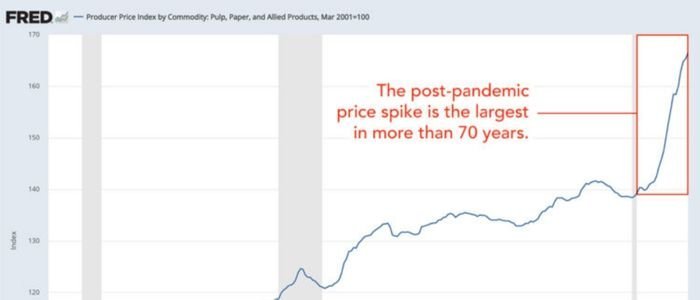Metropolis Report –
The ongoing paper shortage has been a real concern for the printing business since the last year. It is no secret that the world’s publishing sector is experiencing serious difficulties as a result of rising raw material demand and supply chain disruptions, which have further worsened a global paper crisis.
According to a recent assessment by the World Intellectual Property Organization (WIPO), the coronavirus pandemic has had a remarkably wide range of effects on all facets of the worldwide publishing industry as a whole. After COVID struck, still-running paper mills were forced to contend with local lockdowns and staff shortages brought on by illness, severely lowering paper output.
The demand for corrugated and shipping paper skyrocketed as a result of the consumer explosion into online shopping. Several paper manufacturers converted still-functioning facilities from commercial-grade papers to shipping supplies output.
However, the demand for commercial paper started to rise from the beginning of the post-Covid era. Initially, inventory stock was used to meet a large portion of the increased paper demand. However, due to the overwhelming need for paper right now, those resources have long since run out and are not being replaced in any meaningful way.

We’re now faced with a constrained paper supply and an unexpectedly large demand for that paper. Over the past year, paper costs have skyrocketed, rising for some grades and weights by 30 to 50 percent (or more). Even when the paper is available, delivery times are getting weeks and months longer. The situation has even been aggravated by the Russia-Ukraine war situation. It is anticipated that the paper market will remain constrained at least through the first quarter of 2023 and most likely through the second.



